Having The Right Tool For The Job
by Kevin George
With the various shapes, curves and sizes of vehicles these days, it is almost impossible to properly finish a vehicle using a single tool. Certain types of machines are better suited for different areas or situations. There are lots of options for polishers on the market today ranging from random orbital polisher to a rotary buffer, or even a combination of these two type in a forced rotation random orbital such as the Flex XC 3401 VRG. These types of machines all have good points to them along with some negative points.
Random Orbital (Dual-action) Polishers
Random orbital polishers, also known as dual-action polisher are typically the safest machines for use in the hands of a novice. There are many options available when it comes to orbital diameter, also referred to as throw with 8mm being the most standard. A very popular option in this class is a large throw machine such as the Rupes, Griots “The Boss” or various other makes available. Large throw machines typically range from a 12mm throw all the way up to a 21mm. These machines typically are more expensive, however most will find it difficult to go back to using a standard throw machine after working with a large throw. Using a standard throw machine all day can take quite the toll on you if you’re not used to it. These machines require downward pressure while running them, roughly 15 lbs. of pressure is recommended in order to achieve proper correction from the tool. Large throw machines however require very little downward pressure, as the large throw provides most of the correction making it far less physically demanding to use.
The definition as provided in the Auto Detailing Guide – Detailing Dictionary on Detailed Image.
- A power tool which attaches to a backing plate and buffing pad that uses random oscillation to spread a product onto a surface and/or utilize an abrasive to remove surface defects from a surface.
Rotary Polishers
Rotary polishers have been around for a very long time and are still widely used by many places. In the hands of someone with a good amount of experience you can perform corrections much quicker than when using a dual-action polisher. However, in the wrong hand these machines can cause a lot of damage to the finish on your vehicle, most common are burnt edges or holograms. This damage occurs from running the machine at too high of an RPM or cutting into edges on the body and burning through the paint. I very rarely ever get my rotary out to use on any of the cars I work on.
The definition as provided in the Auto Detailing Guide – Detailing Dictionary on Detailed Image.
- A buffer that has no secondary action to its rotation. “ZOFRO Polishing Machine (Zero Offset Forced Rotation Orbital)”
Forced Rotation Orbital
In this area you get a hybrid of a rotary and a dual-action machine. The Flex is the only tool that is made that performs like this. I really have very little experience using a Flex, however they do have a large following. Use of the Flex will still require a good bit of downward pressure like all other 8mm throw dual-action polishers, however it will not stall out in complex areas like other dual-action polishers.
This is a great comparison chart showing the different types of polishers/buffers available through Detailed Image including the specs for each.
Buffer Comparison Chart
| Buffer | Type | Speed Dial | Comes With | Specifications | Compatible Backing Plates & Pads |
| Random orbital |
|
|
|
|
|
| Random orbital | 2,500 RPM – 4,700 RPM | Built in 6″ backing plate |
|
|
|
| Random orbital | 2,500 RPM – 5,300 RPM | Built in 5″ backing plate |
|
|
|
| Random orbital | 4,000 RPM – 5,500 RPM |
|
|
|
|
| Random orbital | 4,000 RPM – 5,500 RPM |
|
|
|
|
| Rotary & Random orbital | 2,000 RPM – 5,000 RPM |
|
|
||
| Random orbital | 0 – 5,000 OPM |
|
|
|
|
| Random orbital | 0 – 5,000 OPM |
|
|
|
|
| Random orbital | 1,500 – 4,200 OPM |
|
|
|
|
| Random orbital | 3,000 – 7,000 OPM |
|
|
|
|
| Random orbital |
|
6″ DA backing plate included |
|
|
|
| Random orbital | 3,500 to 10,000 OPM | 3″ DA backing plate included |
|
|
|
| Forced random orbital |
|
|
|
|
|
| Rotary | 600 – 2,100 RPM | Side handle included |
|
|
|
| Rotary |
|
|
|
|
|
| Rotary | 1,300 – 3,900 RPM |
|
|
|
This chart is also available in the polishing section of our Detailing Guide.
I typically use at least two (2) different machines on every project, however at times I will use up to four (4) different tools depending on the size and complexity of the vehicle I am working on.
Currently my personal machine arsenal consists of the following.
- Griot’s Garage The Boss G21: used with 6.5″ pads on larger flat panels such as roofs, hoods or doors
- Rupes LHR 15ES mkII: used with 5.5″ pads on larger areas also, but mainly on areas where the larger 21mm throw and pads might not work such as some fenders, doors or side skirts.
- Rupes LHR 75E Mini: used with 3″ and 4″ pads for smaller tighter areas such and front and rear bumper covers, pillars or mirrors
- Pneumatic DA polisher: used with 2″ pads for grilles and other very tight areas
- Makita 9237C-X3: used with 5.5″ pads. I actually use this more for interior work such as cleaning seats and carpets.
- Flex PE 8 Kompakt (soon to be added): for use with 1″, 2″ or 3″ pads for very tight areas where a DA might not be accessible
While it is not required to have different tools for various size pads, when operating a business you want to be as efficient as possible… The time lost having to stop and change backing plates on a machine adds up through the course of working on a vehicle. Everyone will have a different opinion of which type of machine is the best or even which brand is best, however any brand or type of machine is fully capable of achieving great results. This will always be a personal preference.
The other important thing to have on hand is various types and sizes of pads. While I am not going to get into pads for this article, I will be following up with another article discussing the importance of having multiple types and sizes of pads.


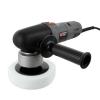
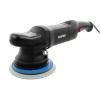
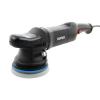
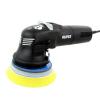
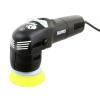
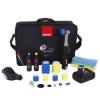
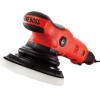
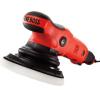
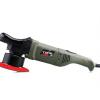
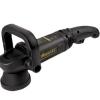
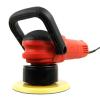
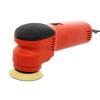
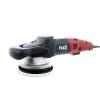
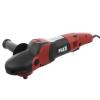
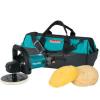
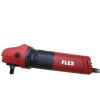






In my opinion, the PE8 is overrated
– Needs a soft start trigger
– Awkward trigger, even after rotating the body to relocate it
– Tippy, especially with an extension
I find myself using my HF Pneumatic w 2″ and old PC with 3″ DAMF
Kyle, I do agree with a few of your comments. However I would not say it is overrated. The tool works great for the purpose I wanted it for, which is very tight areas that a DA is not able access.
What tools do u used with the Mikita for interior cleaning seats floor?
Jeff, sorry for the late response. I will use it with carpet brushes on occasion for floors, and I also use it with microfiber pads for cleaning seats on occasion. Not something I do all the time, but there are times where I will use it if I have it out.
I really like using the rupees. It would be very difficult for me to try the flex, after hearing a lot of retailers complain about its weight. I just ordered the meguiars mt3000. I too enjoy the flex pe8 for those very difficult areas on the cars. I was completely satisfied when a client of mine scratched his center console polished plastic area. Pe8 just made it super easy to get in the area i needed and client was extremely happy. He figured I was not able to get it out.
I really feel that having the right tool for the job will separate you from the other guys. Sometimes it makes sense buying the polisher sheen your others still work.
I hear there are rumors that Flex originally took the idea from Makitas forced rotation polisher the BO6040.
Here’s a video of the Makita BO6040 in action
https://youtu.be/XdI1nMSMt3Y
I just purchased the Griot’s Garage 3″ Orbital Buffer to get into tight or small areas, my question is can I use an extension bar on an Orbital Buffer to aid in working the small areas? I watched a YouTube video where a short bar, (it looked to be around 3″inches) was attached to a rotary buffer with a 3″ inch backing plate.
John, you really can not or I say should not add an extension to one of the random orbital polishers. This would likely through the balance of the machine off, which is why you do not see extensions for DA really available. This was a good question however.
Hi, I’m pretty new to detailing and looking to purchase Porter Cable 7424XP since I’m a beginner. But im somewhat confused on the backing plates, If I have a 3″ backing plate, can I use buffing pad bigger than 3″ or do I have to purchase a 5″ backing plate if I want to use a 5″ buffing pad. Or should I just purchase a 5″ backing plate and use a 3″ pad when needed.
Thank you
Danny – If you have a 3″ backing plate, we would recommend using 3″ pads. If the pad is slightly larger than the backing plate that is a good thing, but never go smaller. If you go smaller, you leave the sides of the backing plate exposed and that leaves you open to the danger of hitting the paint with your backing plate. If you are looking to use larger pads, we recommend picking up a larger backing plate. For example, if you are using the 5.5″ pads, you will want to use the 5″ backing plate.